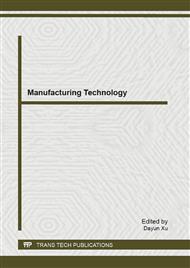p.402
p.409
p.414
p.420
p.425
p.431
p.439
p.446
p.451
Geometrical Comparison between Chinese and European-American Cervical Vertebrae
Abstract:
Neck finite element models have been extensively applied to design and validate the artificial biomaterials. To date, many finite element models of European-American neck have been proposed. However, the issue that using the geometrical scaling to convert a western model into a Chinese neck model is highly controversial. A Chinese neck model, based on MRI/CT scan images and frozen slice images from a 35-year old male cadaver, was established in this paper to examine the geometrical difference between Chinese and European-American cervical vertebrae. Results showed that at every level of all cervical vertebrae except C2, a significant difference between the geometrical model of the Chinese and European-American cervical vertebrae was revealed. The authors suggested that there might be a significant difference between the Chinese and European-American cervical vertebrae.
Info:
Periodical:
Pages:
425-430
Citation:
Online since:
December 2012
Keywords:
Price:
Сopyright:
© 2013 Trans Tech Publications Ltd. All Rights Reserved
Share:
Citation:


